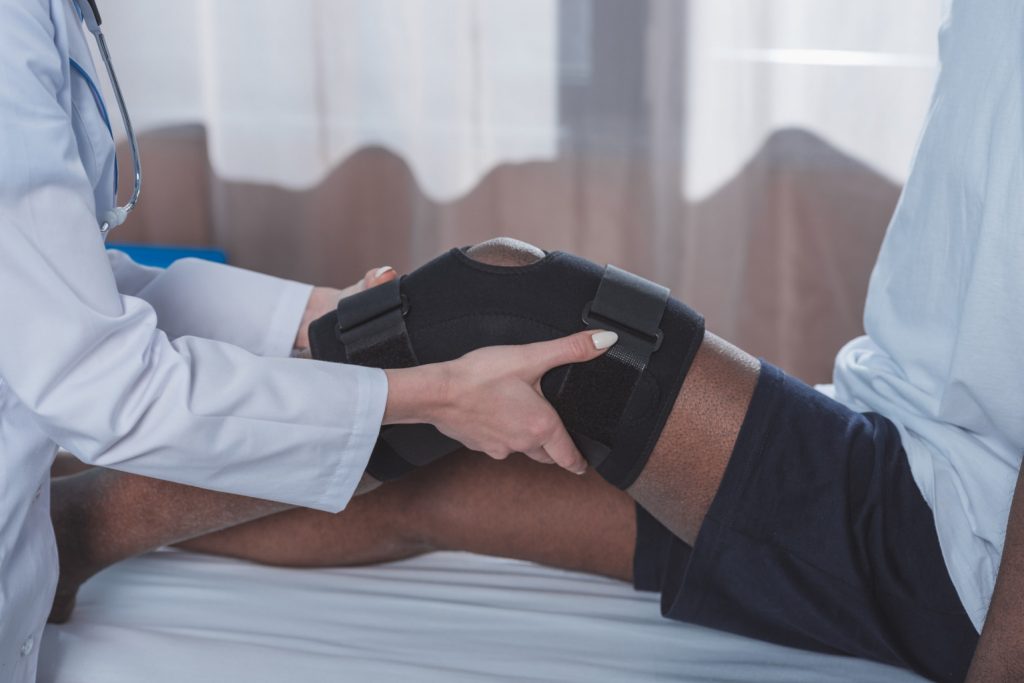Participating in sports is a beloved pastime for many people, from young children to professional athletes. However, this activity carries inherent risks. Every year, thousands of individuals suffer sports-related injuries, which can range from minor to severe. These injuries affect not just athletic performance but also daily activities and quality of life.
Sports injuries often occur during practice or gameplay and can be caused by a range of actions—from normal physical contact to acts of negligence or intentional violence. Below are some of the most common types of sports injuries and what you can do if you have suffered harm due to someone else’s actions.

Sprains and strains top the list of common sports injuries. A sprain occurs when ligaments—the tough bands of tissue connecting bones in a joint—suddenly stretch too far or tear. Ankles, knees, and wrists are particularly susceptible to sprains. Strains, on the other hand, involve the stretching or tearing of muscles and tendons and commonly affect the back, thigh, and hamstring.
Both sprains and strains can be caused by overexertion or the awkward twisting and turning of joints during physical activities. Proper warm-ups, stretching, and conditioning can help prevent these injuries, as well as wearing appropriate footwear and other gear.
The knee is one of the body’s most complex and heavily used joints, making it particularly vulnerable to various injuries. Sports such as football, basketball, and skiing, which involve significant jumping, landing, twisting, or fast direction changes, are particularly hard on the knees.
Common knee injuries include anterior cruciate ligament (ACL) tears, meniscus tears, and patellar tendinitis. These can result from both high-impact collisions and the gradual wear and tear of the joint. Protective gear, proper training, and technique adjustments can help mitigate these risks.
Concussions—a type of traumatic brain injury—are caused by a bump, blow, or jolt to the head. They can also occur from a hit to the body that causes the head and brain to move rapidly back and forth. Sports like football, boxing, and ice hockey are notorious for a high risk of concussions.
Symptoms may include headache, dizziness, nausea, confusion, and sometimes loss of consciousness. In more serious cases, athletes can develop other types of traumatic brain injuries, such as cerebral contusions, diffuse axonal injuries, and hematomas. These can occur when the brain is subjected to severe or repeated impacts, causing the brain tissue to bruise, tear, or bleed.
While less common than other sports injuries, spinal cord damage is often the most severe—especially when it leads to temporary or permanent paralysis. These injuries usually result from significant trauma to the spine and are most associated with sports involving high speeds or heights, such as motor racing, diving, and skiing.
The use of proper protective gear like helmets and spine protectors, and adherence to safety rules and guidelines can help prevent spinal cord injuries. However, these injuries may still occur when necessary safety measures are neglected, equipment is improperly maintained, or participants fail to follow established safety protocols.
Achilles tendon injuries are a serious concern among athletes, especially those who participate in running and jumping sports. This tendon connects the calf muscles to the heel bone. Despite its strength, the Achilles tendon is vulnerable to overuse injuries that can range from mild tendinitis to severe ruptures.
Symptoms typically include pain along the back of the leg or near the heel, stiffness, and limited mobility. Recovering from an Achilles tendon injury often requires a combination of rest, physical therapy, and, in some cases, surgery.
The force exerted during impacts, falls, or collisions in sports like football, soccer, or skiing can easily fracture bones. These injuries can be very distressing, sometimes requiring weeks or months of recovery time. Broken bones may also prevent athletes from returning to their sport, either temporarily or permanently.
Common symptoms include immediate, severe pain, swelling, and an inability to use the affected limb. Treatment may involve immobilization with casts or splints, pain management, and sometimes surgery to ensure proper healing and alignment.
Shoulder injuries are widespread among athletes. Sports that involve overhead motions, such as swimming, baseball, and tennis, often lead to injuries like rotator cuff tears, impingement, or dislocations.
Symptoms of shoulder injuries may include pain, weakness, and a reduction in the ability to move the arm. Like other sports injuries, treatment options include rest, ice, physical therapy, and surgeries, depending on the severity of the injury.
When a sports injury in California is severe enough to impact a person’s lifestyle or career, legal action may be necessary. If you or someone you know have suffered a sports-related injury due to negligence—such as inadequate safety measures, improper coaching techniques, or poorly maintained equipment—you may want to pursue a lawsuit against the person or entity responsible.
This action can be taken against individuals, teams, schools, sports facilities, or even manufacturers of defective products:
Navigating these legal paths can be complex, which is why you need an attorney on your side. A San Francisco personal injury lawyer can help clarify your legal options and support you through the legal process, advocating for your right to financial compensation. Contact an attorney today to discuss your case and learn how they can assist you in achieving the best possible outcome.





